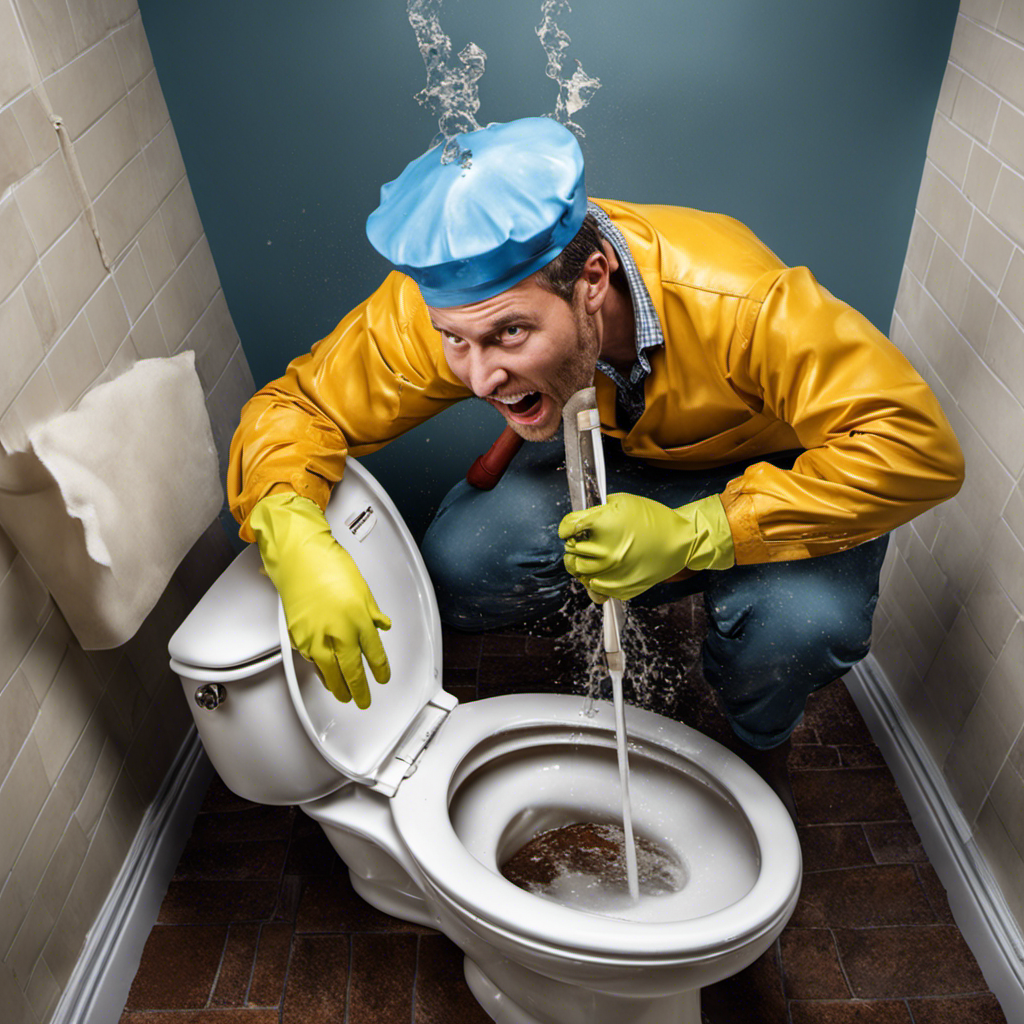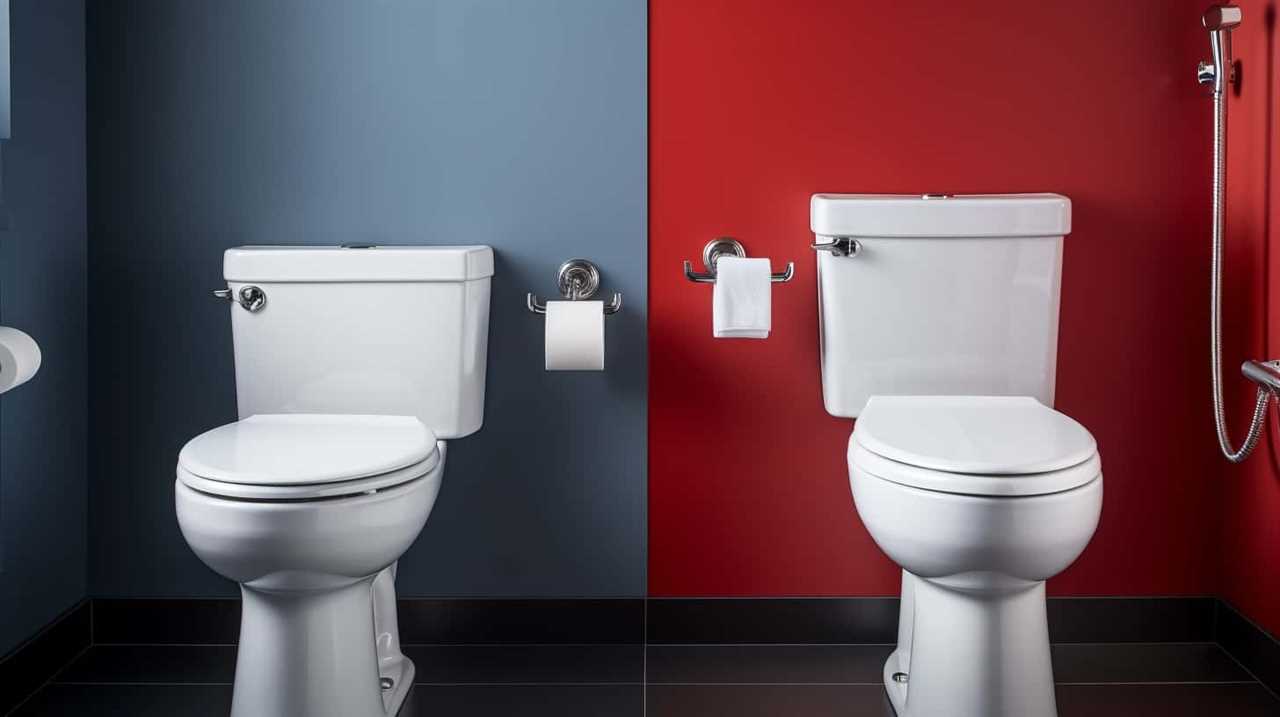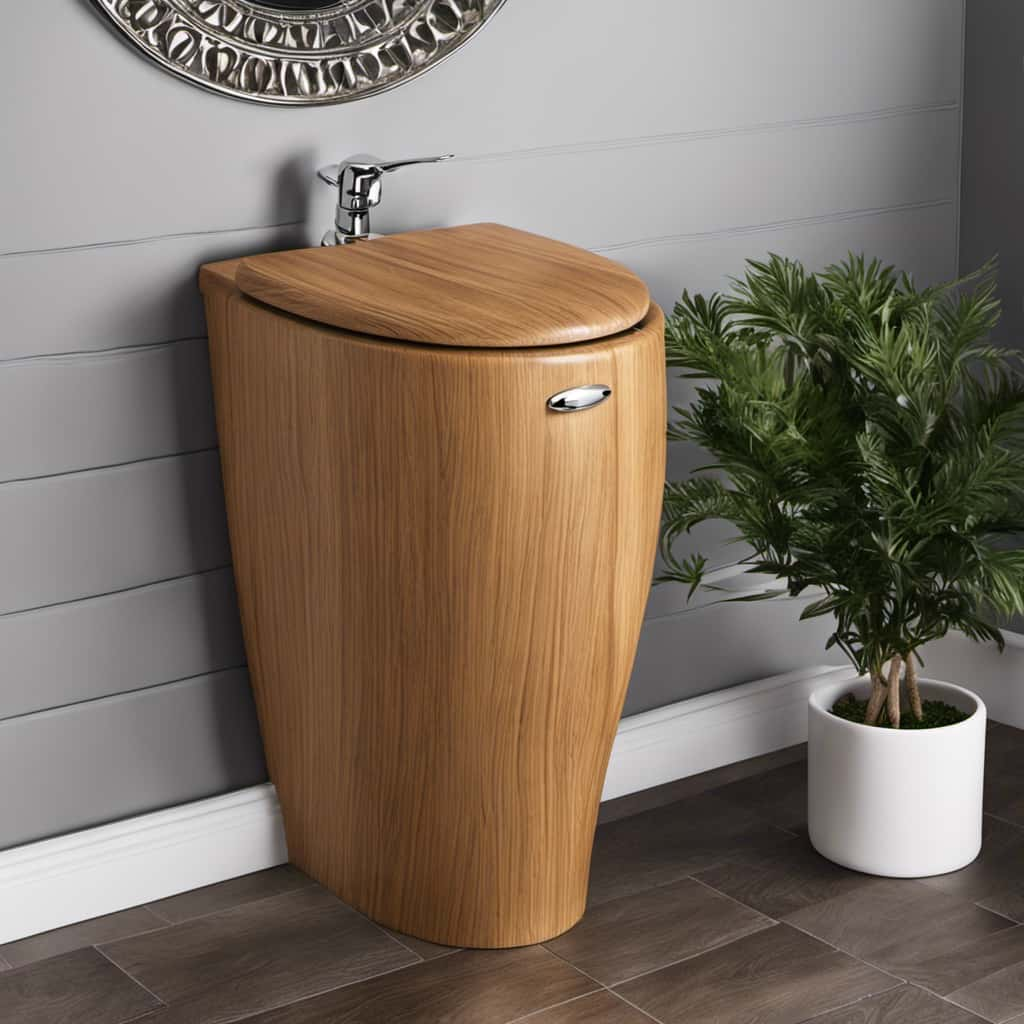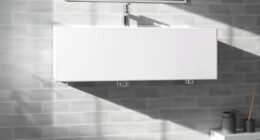As someone who has experienced the frustration of a perpetually running toilet, I understand the annoyance and inconvenience it can cause. But fear not, there is a simple solution!
In this article, I will guide you through the steps to get your toilet to stop running. By identifying the cause, adjusting the float, cleaning or replacing the flapper valve, and addressing issues with the fill valve, you’ll be able to troubleshoot and fix this common household problem.
Let’s dive in!
Key Takeaways
- The toilet cistern, water pressure, flapper valve, and fill valve are potential causes of a running toilet.
- To adjust the water level, bend the float arm downwards slightly.
- Cleaning or replacing the flapper valve may solve the issue.
- Inspect the fill valve for damage or debris and check the water pressure in your home.
Identifying the Cause of a Running Toilet
To figure out why your toilet is running, you’ll need to identify the cause.
One common cause of a running toilet is a problem with the toilet cistern. The cistern is the container that holds the water used for flushing. If the cistern is not functioning properly, it can cause water to continuously flow into the toilet bowl, leading to a running toilet.
Another potential cause of a running toilet is an issue with the water pressure. If the water pressure is too high, it can cause the toilet to continuously fill with water, resulting in a running toilet.
Checking and Adjusting the Toilet Float
First, make sure you’ve checked and adjusted the toilet float. This is an important step in fixing a running toilet.
Start by removing the tank lid and locating the float arm. The float arm is connected to the float ball, which controls the water level in the tank.
If the water level is too high, it can cause the toilet to run continuously. To adjust the water level, simply bend the float arm downwards slightly. This will lower the float ball and decrease the water level.
Make sure to flush the toilet and check if the water stops running. If not, you may need to further adjust the float arm or consider other possible causes for the running toilet.
Cleaning or Replacing the Flapper Valve
Once you’ve finished adjusting the toilet float, it’s time to focus on cleaning or replacing the flapper valve.
The flapper valve is responsible for controlling the water flow from the tank into the bowl. Over time, it can become dirty or worn out, leading to common problems like water leaks or a running toilet.
To clean the flapper valve, start by turning off the water supply to the toilet. Then, remove the flapper valve from its seat and clean it with a mild detergent and a soft brush.
If the flapper valve is damaged or worn out, it’s best to replace it with a new one. This can be done by disconnecting the chain and attaching the new flapper valve in its place.
With a clean or new flapper valve, you can now move on to addressing issues with the fill valve.
Addressing Issues With the Fill Valve
Now you need to check if the fill valve is causing any problems. The fill valve is responsible for refilling the toilet tank after each flush. If there are issues with the fill valve, it can lead to a running toilet or even low water pressure.
To troubleshoot the fill valve, start by inspecting it for any signs of damage or debris. Make sure the water supply to the toilet is turned off before proceeding. If you notice any leaks or cracks in the fill valve, it may need to be replaced.
Additionally, check the water pressure in your home as low water pressure can also affect the fill valve’s performance. If you suspect any leaking pipes, it’s crucial to repair them promptly to prevent further damage and maintain adequate water pressure.
Troubleshooting Persistent Running Toilet Problems
To troubleshoot persistent running toilet problems, you should first check if the flapper valve is properly sealing the tank. If it’s not, it may be causing water to continuously flow into the bowl. Here are some steps to help you troubleshoot and fix the issue:
-
Check the water pressure: Low water pressure can prevent the flapper valve from sealing properly. Make sure the water pressure is sufficient.
-
Inspect the flapper valve: Check for any signs of damage or wear. Replace it if necessary.
-
Adjust the chain: If the chain connecting the flapper valve to the flush handle is too loose or too tight, it can cause the toilet to run. Adjust the chain to the correct length.
-
Fix a leaky toilet handle: A leaky handle can cause the toilet to run continuously. Tighten or replace the handle to fix the issue.
-
Clean the flush valve: Sediment or debris can prevent the flapper valve from sealing properly. Clean the flush valve to ensure it is free from any obstructions.
Frequently Asked Questions
How Do I Fix a Leaky Toilet Handle?
To fix a leaky toilet handle, start by turning off the water supply. Then, remove the lid and locate the toilet flapper. If it’s damaged, replace it. If not, check the handle assembly for any loose or worn parts and replace as necessary.
What Should I Do if My Toilet Keeps Flushing on Its Own?
Why does my toilet flush randomly and won’t stop? It’s frustrating! To fix it, check the flapper valve, water level, and flush handle. Adjust or replace parts if needed. Don’t let the toilet control you!
Can a Clogged Drain Cause a Toilet to Keep Running?
Yes, a clogged drain can cause a toilet to keep running. When the drain is clogged, water cannot flow properly, leading to pressure build-up in the toilet tank, resulting in continuous running.
How Do I Know if I Need to Replace the Entire Toilet Tank?
To determine if I need to replace the entire toilet tank, I would troubleshoot the problem first. Check for leaks, cracks, or faulty parts. If necessary, consult a professional for a thorough assessment.
Is It Possible for a Faulty Water Supply Line to Cause a Running Toilet?
Yes, a faulty water supply line can cause a running toilet. Troubleshooting a running toilet involves checking the water supply line for leaks or blockages and ensuring it is properly connected to the toilet tank.
Conclusion
So there you have it, my toilet is finally no longer running.
After identifying the cause, checking and adjusting the toilet float, cleaning or replacing the flapper valve, and addressing issues with the fill valve, I was able to troubleshoot and fix the problem.
It’s like a peaceful oasis now, with the sound of silence replacing the constant running water.
My toilet has been tamed, and I can now rest easy, knowing that my water bill won’t be skyrocketing anymore.










